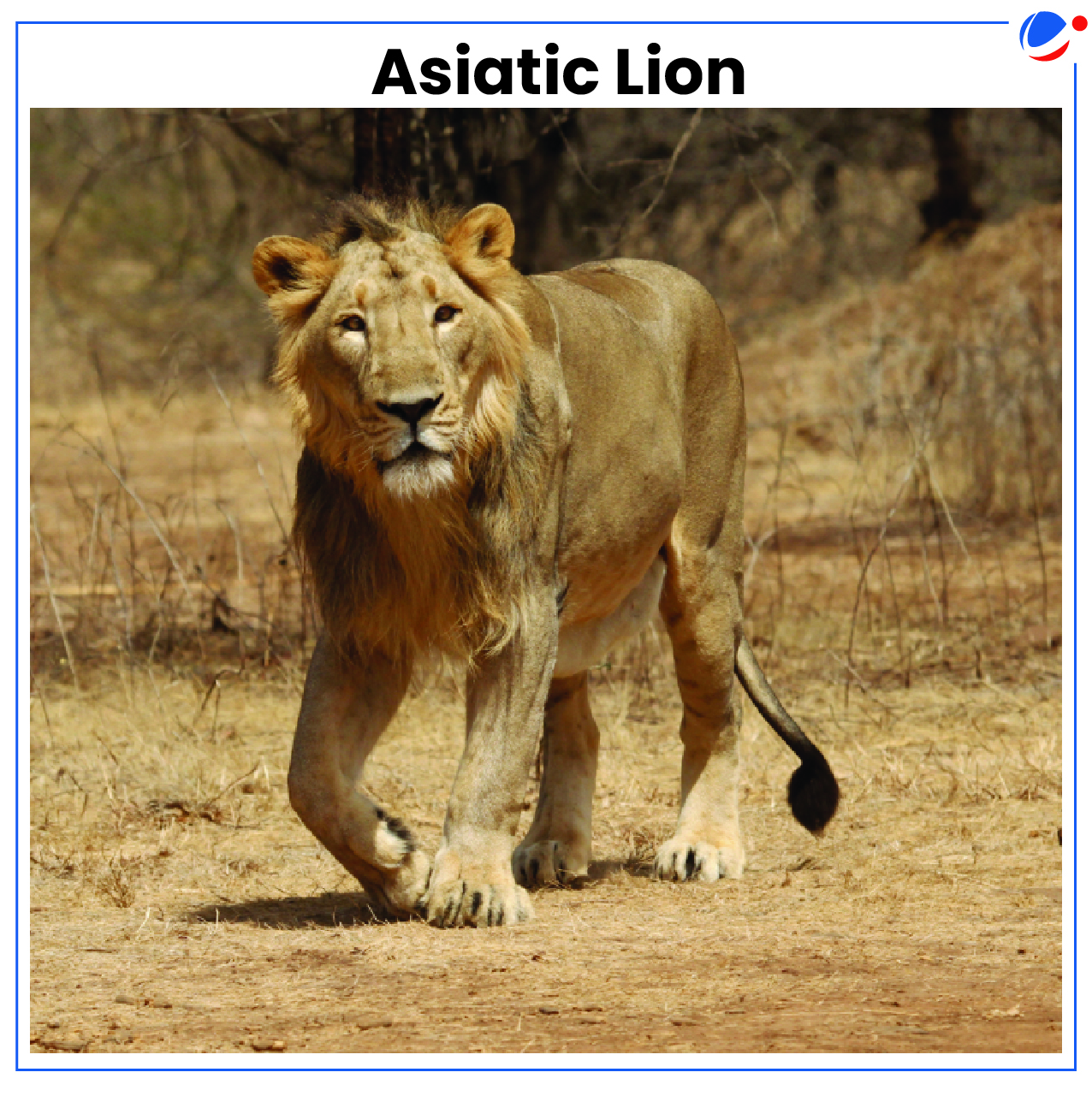Why in the News?
Union Government approved funds for the Project Lion to enhance conservation efforts.
More on the News
- The government also approved the establishment of a National Referral Centre for Wildlife (NRC-W) in Gujarat's Junagadh district.
- NRC-W aims to track wildlife diseases, especially those transmissible to humans. E.g., the Babesiosis (targets red blood cells in lions) outbreak in 2020 killed 23 lions in Gujarat's Gir National Park.
- Nodal Agency: Central Zoo Authority
- Also, the International Union for Conservation of Nature (IUCN) released the First Green Status Assessment for the Lion under the Green Status of Species (See box).
- IUCN has placed lions under the Largely depleted category.
- The assessment also showed that human impacts are preventing the lion from being fully ecologically functional across its range.
- Also, the assessment highlighted that Lions are extinct from North Africa and Southwest Asia.
IUCN Green Status of SpeciesIt provides a global standard for measuring species recovery and assessing conservation impact.
Note: IUCN also releases a Green List of Protected and Conserved Areas. |
About Project Lion (2020)
- Objective: Securing the future of Asiatic lions through comprehensive, long-term conservation efforts.
- Key Focus Areas:
- Landscape ecology-based conservation, ensuring sustainable lion habitats.
- Habitat restoration and securing additional areas for lions.
- Community participation, creating livelihood opportunities for local residents.
- Disease management, establishing India as a global hub for big cat health research and treatment.
- Time Period: 10 years
- Implementation: By the State Government of Gujarat and other stakeholders like the Central Zoo Authority.
About Asiatic Lion (Indian Lion)
|
Several other Initiatives have further consolidated the conservation of Asiatic lions
- International Big Cats Alliance (IBCA): Launched in 2023, the IBCA reinforces the global commitment to conserving big cats, including lions.
- Asiatic Lion Conservation Project: Launched by the Ministry of Environment, Forest and Climate Change.
- Greater Gir Concept: Involves developing additional suitable habitats beyond the traditional Gir National Park & Sanctuary.
- Sanctuaries like Girnar, Pania, and Mitiyala have been notified to expand the protected area network.
- Strengthened Protection Mechanisms: Wildlife Crime Cell is created at the state level and a Task Force for the Greater Gir Region (GGR).
- Other:
- Supported under the Centrally Sponsored Scheme- Development of Wildlife Habitat (CSS-DWH)
- Habitat Improvement Measures (E.g. establishment and maintenance of additional water points)
- Observing World Lion Day (10 August).
Conclusion
Project Lion is a significant step toward securing the future of Asiatic lions through habitat conservation, advanced monitoring, and conflict mitigation. Other potential sites, such as Kuno National Park and Palpur-Kuno Wildlife Sanctuary (Madhya Pradesh), etc., should be developed as alternative habitats beyond the Gir landscape.
Gir landscape
|



